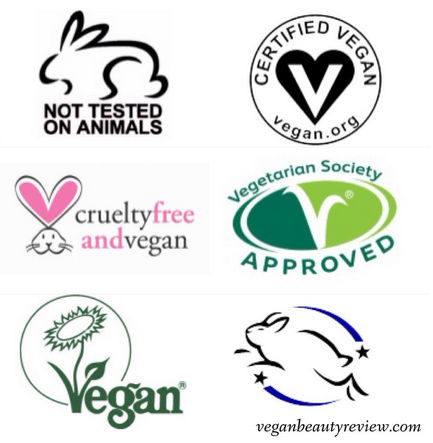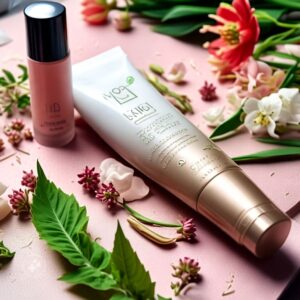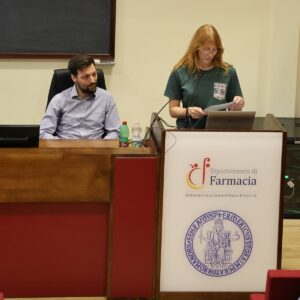There is nothing nicer than being able to read the ingredient label of your favorite cosmetic product and see brands certifying its being 100 percent against animal testing and completely free of animal ingredients.
More and more consumers are turning to vegan and cruelty-free cosmetic products, which are two different and distinct things.
However, some brands classify themselves as vegan despite using established industry practices that are contrary to vegan principles and the guidelines set forth by regulatory authorities.
This can create confusion among consumers about the true nature of the products they buy. It is important to deepen and better understand business practices to ensure they make informed and informed choices.
Let’s see together how to truly have a 100% vegan product to be a true pioneer and leader in the industry.
The evolution of cosmetics in Europe and the world
Over the past three decades, the cosmetics industry has experienced many changes.
On the regulatory side, we have gone from the EU ban on animal testing, first approved in 1993, to the 2013 total ban as part of EU Regulation 1223/2009, which was fundamental in establishing the way we approach safety in cosmetics to date, to the need for cosmetic products to undergo safety assessments and notification to the CPNP portal.
From a marketing perspective, we have witnessed the emergence of claims as diverse and heterogeneous as vegan, “leaping bunny,” skin barrier function, the “clean beauty” phenomenon, the incorporation of biotechnology claims into ingredients, and more.
Some of these have turned out to be passing fads and others that have permanently altered market trends.
Although Regulation 1223/2009, 655/2013 on cosmetic claims and the various guidelines issued by EU bodies outlining best practices in study design have provided clear protocols for the industry, they have also left enough room for ambiguous interpretation.
The blind spots of certifications

The cruelty-free claim
The cruelty-free claim, or hopping bunny claim, is usually certified by a label assigned to cosmetic products that submit their documentation and demonstrate that their processes and raw materials were not developed using animal testing.
Recall, however, that since 2013 there has been a total ban on animal testing at the European level for final products and raw materials.
EU 655/2013 clearly states that: “Claims that convey the idea that a product has a specific benefit are not permitted when that benefit is only compliance with minimum legal requirements.”
Yet this claim is now found in a large percentage of cosmetic products sold in the EU market.
The vegan claim
Similarly, over the past decade we have seen an increase in the vegan claim. The vegan movement is seen by many as an evolution of the cruelty-free movement, as it includes not only the absence of animal testing, but also the absence of animal ingredients in cosmetic products.
In contrast, veganism is an independent movement with historical roots: the first vegan societies were founded in the 1940s, by the food industry and only in the last two decades or so has it embraced the cosmetics industry.
There are several certification platforms offering vegan quality labels, where requirements are examined through adherence to disciplinary documents issued by each certification company.
These documents unfortunately do not cover the entire process of developing a cosmetic product, but are limited to the following criteria:
- Contains no animal or animal-derived ingredients;
- No animal testing was performed on the ingredients or finished product;
- Does not contain Genetically Modified Organisms with animal genes or substances derived from animals.
Animal-derived materials for testing
Thus, there are parts of the product development stages that are not regulated by vegan standards. One example is the materials used during testing.
The preservation effectiveness test, or challenge test, is an excellent case study because it is a mandatory test for products that require a preservation system.
This test uses agar broths of animal-derived ingredients and therefore, from a strictly vegan standpoint, most products would not qualify for a vegan label if this factor were taken into account.
Some laboratories have developed and offered a vegan alternative to this challenge test, using plant-derived agar broths, but this solution has not been widely implemented in the industry.
Testing on humans
Another question to be raised is whether human testing, which is allowed but regulated by the Helsinki Agreement and other EU guidelines, should be considered for vegan standards.
Interestingly, alternatives to in vivo testing on volunteers are widely available in industry through in vitro testing.
But a case-by-case examination of in vitro tests is also useful. Tests such as EpiDerm® and SkinEthic® use reconstructed human epidermis (RhE) models, also derived from human cells. The only 100% vegan, second alternative is the use of macromolecular methods, such as Dermal Irritection®.
Careful consideration should also be given to the ethics of curricula involving human volunteers.
In the opinion of the Scientific Committee on Cosmetic and Non-Food Products, testing on humans is permitted, but all necessary considerations must be taken into account to minimize risks to human subjects.
Often in this case, it is not sufficient to undergo a literature evaluation based on ingredient lists, which is currently the common practice.
In vitro screening + patch test
Standard practice assesses skin irritation potential through patch testing, which is usually performed on between ten and thirty volunteers.
This test, which is carried out on a very small sample and therefore should be further supported, gives rise to one of the most widely used claims in the cosmetics industry, the “dermatologically tested“.
From an ethical point of view, it is imperative to ensure the safety of human volunteers, since in vitro confirmatory tests are widely available.
Examples might be the use of Dermal Irritection® as a screening prior to the performance of any skin studies, or the use of Ocular Irritection® prior to ophthalmologic studies. In this way, the safety of human volunteers is ensured and the effectiveness of the product can be responsibly evaluated.
In vitro tests not only ensure the safety of human volunteers, but also add scientific validation to the results of a patch test.
How to bridge datagaps without resorting to animal testing
Just as we have moved away from animal testing, we are now gradually moving away from toxicological data, used to evaluate cosmetic products, derived from animal testing, even from studies published before the ban on animal testing.
The industry realizes that as the use of new ingredients and raw materials evolves, it will need new tools to make toxicological assessments without the NOAEL, which was previously relied on heavily.
We are witnessing the evolution of NAMs, New Alternative Methods, which aim to create mechanisms for assessing the margin of safety of specific ingredients and are included in the New Generation Risk Assessment approach. Well, again, the inclusion of in vitro studies can yield useful data for the safety evaluator.
The webinar
Whether you are a vegan company and want to truly respect vegan values, whether you are a company that values study data, and even in case you are looking for a way to differentiate yourself in the eyes of consumers, if you are trying to position yourself in a forward-looking way and want to be prepared for future changes in the industry, we invite you to our webinar where you can learn about all the latest challenges regarding the vegan claim.





